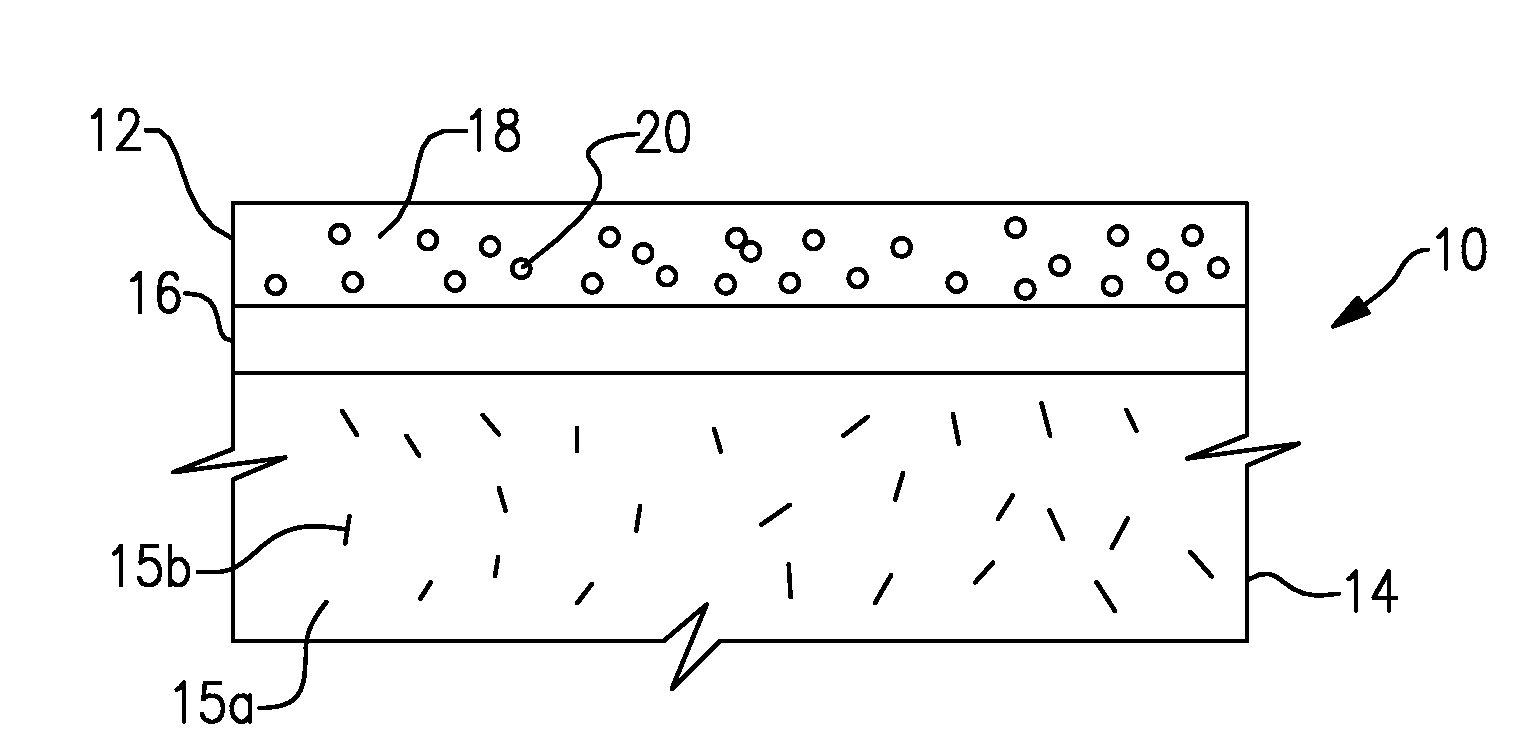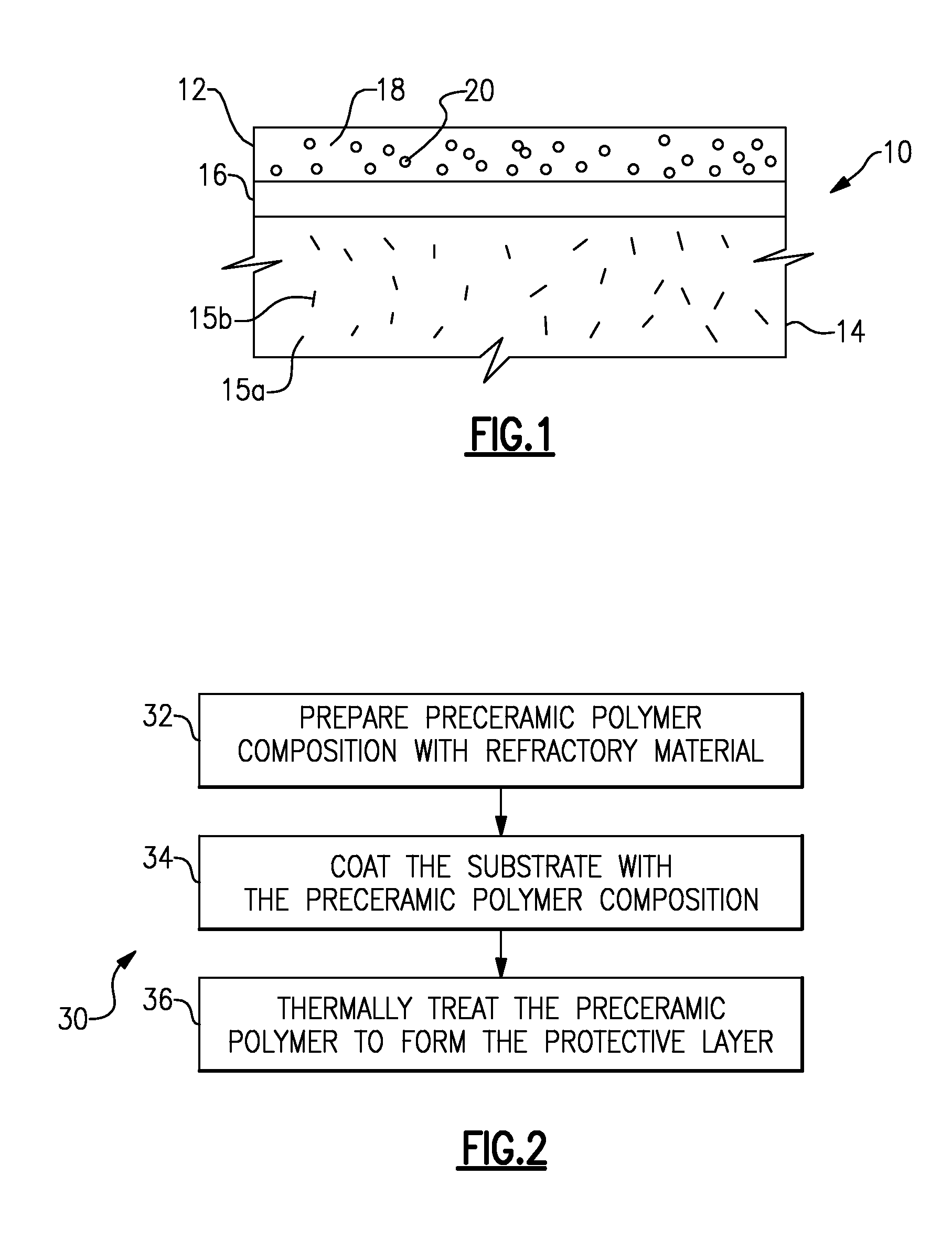High temperature refractory coatings for ceramic substrates
a ceramic substrate and high temperature technology, applied in the field of protective coatings, can solve the problems of increasing the likelihood of premature failure of the component, reducing the effectiveness of protective coatings, and not performing well at temperatures exceeding 3000°
- Summary
- Abstract
- Description
- Claims
- Application Information
AI Technical Summary
Problems solved by technology
Method used
Image
Examples
Embodiment Construction
[0012]FIG. 1 illustrates selected portions of an example composite article 10 having a protective layer 12. Several non-limiting examples of potential applications of the composite article 10 include components for aerospace, hypersonics, rockets, scramjets, functionally graded ceramic structures, catalytic structures, reactors, airfoils, and heat exchangers.
[0013]In the disclosed example, the protective layer 12 is disposed on a substrate 14. Optionally, a silicate layer 16 is disposed between the protective layer 12 and the substrate 14. In one example, the silicate layer 16 includes borosilicate glass. For example, the borosilicate glass includes a composition disclosed in co-pending application Ser. No. 11 / 603,622.
[0014]In the disclosed example, the substrate 14 is a ceramic matrix composite that includes a carbon matrix 15a and silicon carbide reinforcement 15b within the carbon matrix 15a. Although a particular type of ceramic matrix composite and composite structure are discl...
PUM
| Property | Measurement | Unit |
|---|---|---|
| temperature | aaaaa | aaaaa |
| temperatures | aaaaa | aaaaa |
| temperature | aaaaa | aaaaa |
Abstract
Description
Claims
Application Information
 Login to View More
Login to View More - R&D
- Intellectual Property
- Life Sciences
- Materials
- Tech Scout
- Unparalleled Data Quality
- Higher Quality Content
- 60% Fewer Hallucinations
Browse by: Latest US Patents, China's latest patents, Technical Efficacy Thesaurus, Application Domain, Technology Topic, Popular Technical Reports.
© 2025 PatSnap. All rights reserved.Legal|Privacy policy|Modern Slavery Act Transparency Statement|Sitemap|About US| Contact US: help@patsnap.com


